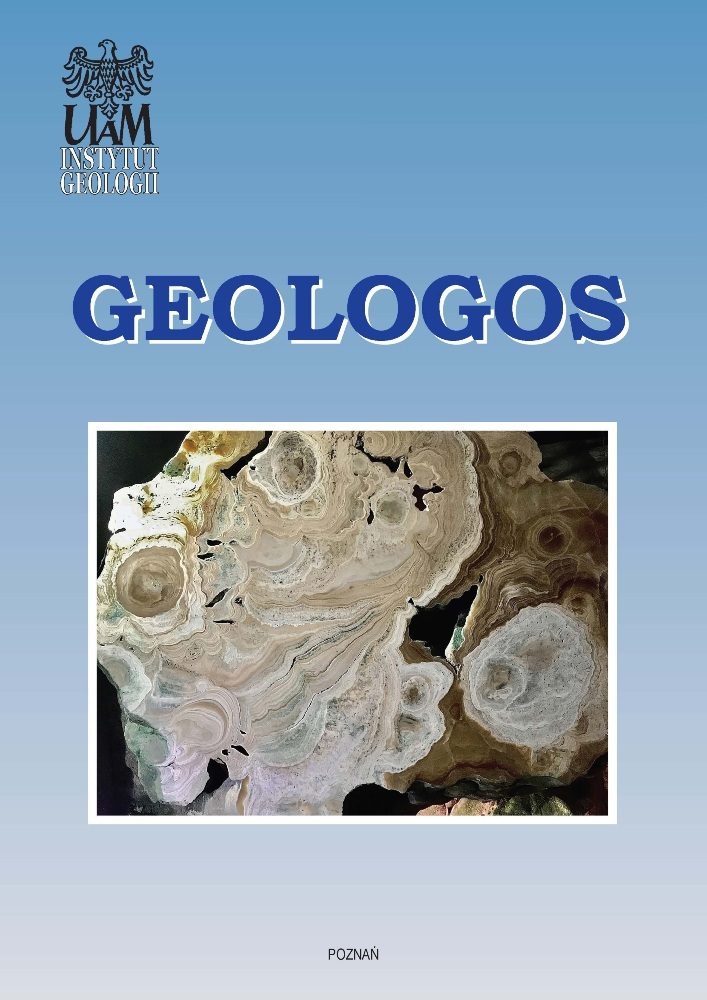Abstract
Science classes in public schools are usually strictly linked to several subjects and taught by reference to the reading-listening model. Non-formal educational institutions and events such as ‘children universities’ and science fairs (and to some degree also some private schools) implement elements of interdisciplinary teaching of science and learning through experiments and the use of scientific methods. Workshops conducted within non-formal educational structures prove that only is this method engaging and understandable to primary school pupils, it also is possibly much more effective than the traditional learning style for coding information and explaining common misconceptions in teaching evolution, palaeontology and biodiversity. The example of a scenario for science classes presented here (the so-called ‘aquatic problem’, i.e., adaptations of primarily terrestrial animals – amniotes – to the aquatic environment) uses simple props, such as everyday items, to address the problems that teachers in public school face. Thus, it can be implemented independently of school budgets and availability of school equipment.
References
Alberta University, 2015. Paleontology: Ancient Marine Reptiles, Online course. Lesson 1: Introduction to marine reptile diversity. Coursera.org, access: 20.06.2021
Boix Mansilla, V. & Duraisingh, E.D., 2007. Targeted assessment of students’ interdisciplinary work: An empirically grounded framework proposed. The Journal of Higher Education 78, 215–237.
Campos, R. & Sá-Pinto, A., 2013. Early evolution of evolutionary thinking: teaching biological evolution in elementary schools. Education and Outreach 6, 25.
Cassill, D.L., 2021. Multiple maternal risk-management adaptations in the loggerhead sea turtle (Caret-ta caretta) mitigate clutch failure caused by catastrophic storms and predators. Scientific Reports, 11, doi:10.1038/s41598-021-81968-0.
Chi, M.T.H., de Leeuw, N., Chiu, M-H. & Lavancher C., 1994. Eliciting self-explanations improves understanding, Cognitive Science 18, 439–477.
Cleland, C.E., 2001. Historical science, experimental science, and the scientific method, Geology 29, 987–990.
Cutter-Mackenzie, A. & Edwards, S., 2013. Toward a model for early childhood environmental education: Foregrounding, developing, and connecting knowledge through play-based learning. The Journal of Environmental Education 44, 195–213.
Fitzgerald, A. & Smith, K., 2016. Science that matters: exploring science learning and teaching in primary schools. Australian Journal of Teacher Education 41, 64–78.
Frensley, B.T., Stern, M.J. & Powell, R.B., 2020. Does student enthusiasm equal learning? The mismatch between observed and self-reported student engagement and environmental literacy outcomes in a residential setting. The Journal of Environmental Education, doi: 10.1080/00958964.2020.1727404.
Garraway-Lashley, Y.M., 2019. Teaching Science at the Primary school level: “Problems teachers’ are facing”. Asian Journal of Education and e-Learing 7, 81–94.
Gingerich, P., 2003. Land-to-sea transition in early whales: evolution of Eocene Archaeoceti (Cetacea) in relation to skeletal proportions and locomotion of living semi-aquatic mammals. Palaeobiology 29, 429–454.
Hannula, K.A., 2003. Revising geology labs to explicitly use the scientific method. Journal of Geoscience Education 51, 194–200.
Jacob, H.J., 1953. Some applications of the scientific method as applied to the teaching of elementary-school science. LSU Historical Dissertations and Theses 8055, 189 pp., https://digitalcommons.lsu.edu/gradschool_diss-theses/8055.
Lattuca, L.R., Voigt, L.J. & Fath, K.Q., 2004. Does interdisciplinarity promote learning? Theoretical support and researchable questions. The Review of Higher Education 28, 23–48.
Maglaughlin, K.L. & Sonnenwald, D.H., 2005. Factors that impact interdisciplinary natural science research collaboration in academia. [In:] Ingwersen, P. & Larsen, B. (Eds), Proceedings of ISSI 499–508.
Markley, M.J., 2010. The [Geo]Scientific Method; hypothesis testing and geoscience proposal writing for students. Journal of Geoscience Education 58, 198–202.
Martin, V. & Pressley, M., 1991. Elaborative-interrogation effects depend on the nature of the question. Journal of Educational Psychology 83, 113–119.
McPherson, G.R., 2001. Source teaching & learning the scientific method author(s). The American Biology Teacher 6, 242–245.
Montgomery, H. & Donaldson, K., 2014. Using problem-based learning to deliver a more authentic experience in paleontology. Journal of Geoscience Education 62, 714–724.
Mulligan, N.W. & Hornstein, S.L., 2003. Memory for actions: Self-performed tasks and the reenactment effect. Memory & Cognition 31, 412–421.
Nagloo, N., Collin, S.P., Hemmi, J.M. & Hart, N.S., 2016. Spatial resolving power and spectral sensitivity of the saltwater crocodile, Crocodylus porosus, and the freshwater crocodile, Crocodylus johnstoni. Journal of Experimental Biology 219, 1394–1404.
Newell, W.H., 1994. Designing interdisciplinary courses. New Directions for Teaching and Learning 58, 35–51.
Nowacek, R.S., 2005. A discourse-based theory of interdisciplinary connections. The Journal of General Education 54, 171–195.
Nyberg, L., Sandblom, J., Jones, S., Neely, A.S., Petersson, K.M., Ingvar, M. & Bäckman, L., 2003. Neural correlates of training-related memory improvement in adulthood and aging. Proceeding of the National Academy Science 100, 13728–13733.
Oxford English Dictionary, 2012. 7th Edition. Oxford University Press.
Pyeson, N., 2019. Spying on whales. Penguin Books, 336 pp.
Saikawa, Y., Hashimoto, K., Nakata, M., Yoshihara, M., Nagai, K., Ida, M. & Komiya, T., 2004. The red sweat of the hippopotamus. Nature 429, 363.
Vars, G.F., 1991. Integrated curriculum in historical perspective. Educational Leadership 49, 14–15.
Xiaowei, T., Coffey, J.E., Levin, D. & Hammer, D., 2018. The scientific method and scientific inquiry: tension as in teaching and learning. Science Education 94, 29–47.
You, H.S., 2017. Why teach science with an interdisciplinary approach: history, trends and conceptual frameworks. Journal of Education and Learning 6, 66–77.
License
Copyright (c) 2021 Mateusz Antczak

This work is licensed under a Creative Commons Attribution-NonCommercial-NoDerivatives 3.0 Unported License.
